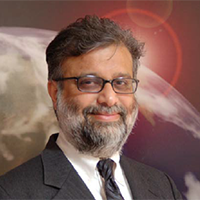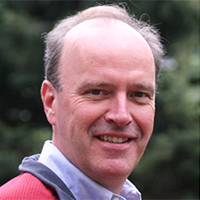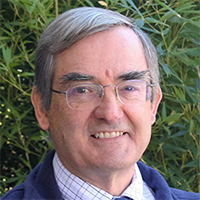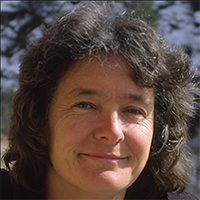Heliophysics Summer School Program Leaders
Prominent scientists from complementing sub-disciplines within heliophysics lead the Heliophysics Summer Schools. They are responsible for selecting the school faculty each year and developing the teaching schedule.
The Heliophysics Summer School focuses on the physics of the connections between the Sun, the heliosphere, the magnetosphere, the ionospheres, and the upper atmosphere of the planets. The solar system offers a wide variety of conditions under which the interaction of bodies with a plasma environment can be studied, while exoplanets and Sun-like stars offer an even wider range of perspectives with lessons about our local cosmos from distant past to distant future.
Comparative Heliophysics
The 2024 Summer School will focus on Comparative Heliophysics
The school will be based on lectures, laboratories, and recitations from world experts, and will draw material from the five textbooks: Heliophysics I-IV, published by Cambridge University Press, and textbook V, available online with free access.
2022 - 2023 School Deans
Add photos of Christina Cohen and Mark Moldwin, and descriptions of their expertise.
2016 - 2019 School Deans
 Prof. Amitava Bhattacharjee | Princeton Plasma Physics Laboratory
Prof. Amitava Bhattacharjee | Princeton Plasma Physics Laboratory
Amitava Bhattacharjee is the head of the Theory Department at the Princeton Plasma Physics Laboratory (PPPL) and professor of astrophysical sciences at Princeton University.
Bhattacharjee joined PPPL in 2012 from the University of New Hampshire, where he held an endowed professorship and ran the Center for Integrated Computation and Analysis of Reconnection and Turbulence. He previously taught at the University of Iowa and Columbia University after earning his PhD in astrophysical sciences from Princeton University. From 2006-2009 he was senior editor of Journal of Geophysical Research: Space Physics.
Bhattacharjee's research is wide-ranging, encompassing magnetic reconnection and turbulence in fusion, space, and astrophysical plasmas, dusty plasmas, and free-electron lasers. In recent years, the primary focus of his research has been magnetic reconnection, when magnetic fields disconnect and suddenly snap together again to release large amounts of energy. He is currently co-director with physicist Jay Johnson of the Princeton Center for Heliospheric Physics.
 Prof. Dana Longcope | Montana State University-Bozeman
Prof. Dana Longcope | Montana State University-Bozeman
Dr. Dana Longcope is a Professor of Physics at Montana State University-Bozeman. He conducts theoretical research into the basic physics of magnetic fields in ionized plasmas and the application of these concepts to processes on the Sun and the heliosphere. He has studied the emergence of magnetic flux from the solar interior, the storage of magnetic energy in the corona, and its release through coronal mass ejections He has also studies the release of magnetic energy through reconnection to model solar flares. This line of investigation has included theoretical investigations of the processes by which energy is transformed to heat, plasma flows, radiation, and plasma waves, in addition to applied models of numerous observed solar flares.
Dana has been a professor at Montana State for the past twenty years. He is presently chairing the Solar Physics Division of the American Astronomical Society.
2013 - 2015 School Deans
 Dr. Karel Schrijver | Lockheed Martin Advanced Technology Center
Dr. Karel Schrijver | Lockheed Martin Advanced Technology Center
Karel Schrijver's work focuses on understanding of the Sun's magnetic activity. His research includes the dispersal of magnetic field across the solar surface and how that shapes the quiescent solar wind throughout the heliosphere, as well as solar eruptions and explosions that are the drivers of severe space storms around Earth. He continues to be interested in how we can learn about the Sun by observing other Sun-like stars, and vice versa.
He is currently the Principal Investigator of the Atmospheric Imaging Assembly (AIA) onboard the NASA Solar Dynamics Observatory, and is co-investigator on the Interface-Region Imaging Spectrograph (IRIS), a NASA Small Explorer. He is motivated by his curiosity into the workings of the local cosmos as well as by the societal relevance of Sun-Earth connections.
"From its beginning, the Heliophysics Summer School has been a wonderful opportunity to engage young researchers, to learn about the physics of the Sun-Earth system, and to get to work with colleagues with wide-ranging interests."
 Prof. Jan Sojka | Utah State University
Prof. Jan Sojka | Utah State University
Jan Sojka’s research delves into how our upper atmosphere and its ionosphere are coupled with the magnetosphere and driven by the Sun and solar wind in an effort to unravel impacts on our technologies. His research emphasis is on the modeling of the ionosphere and its couplings and drivers to enable assessments of how well our theories/models conform to reality.
For over four decades, he has been involved with sounding rockets; magnetospheric and ionospheric satellite missions (ISEE, GEOS, DE, DMSP,etc) as well as numerous ground based facilities (Millstone Hill, Arecibo, PFISR, EISCAT, etc); and currently as a Co-Investigator on the NASA SDO’s EVE instrument observing the X-EUV solar irradiance.
The term Heliophysics embodies Jan’s interests in merging our community disciplines of solar, solar wind, magnetosphere, ionosphere, and upper atmosphere into one cross-discipline that understands the cause and effects of Space Weather in its broadest sense. Recently, he served as the President of the Space Physics and Aeronomy (SPA) section of the AGU, a section that spans these disciplines.
 Frances Bagenal (University of Colorado/LASP/APS)
Frances Bagenal (University of Colorado/LASP/APS)
The main theme of Fran Bagenal's research has been the synthesis of data analysis and theory in the study of space plasmas, particularly in planetary magnetospheres. She has been involved in NASA missions to planetary objects including Voyager (which flew past Jupiter, Saturn, Uranus & Neptune), Galileo (a Jupiter orbiter), and the experimental Deep Space 1 (which flew past Comet Borelly). She is the particles theme lead on the New Horizons spacecraft that will fly past Pluto on July 14, 2015 where she expects to find the escaping atmosphere acts like a colossal comet in the solar wind. For the Juno mission (that will go into polar orbit around Jupiter in July 2015) she co-chairs the magnetospheric working group, coordinating observations of the physical processes that generate Jupiter's bright and dynamic auroral emissions.
"I enjoy studying the environs of planets dominated by their magnetic fields – magnetospheres – because the systems are dynamic, involve a wide range of physical phenomena, and each new space mission seems to bring surprises."
Seasons In Space: Cycles of variability of Sun-Planet systems
The 2015 Summer School will start from the foundations of heliophysics and proceed with a focus on the cycles of variability throughout the planetary system: the origins of the sunspot cycle, the consequences for the solar wind and the galactic cosmic rays, and the variety of impacts of these processes on planetary environments and upper atmospheres, particularly Earth's. The School will also address the space-weather consequences of solar wind patterns associated with the Sun's rotation, and will look into the consequences of planetary orbital motions that cause the seasonal changes in geospace from ionosphere to magnetotail that are associated with the tilt of planetary spin and magnetic axes relative to the orbital planes.
Comparative Heliophysics
The 2014 Summer School focused on the foundations of heliophysics while exploring connections to adjacent disciplines from the perspective of our local cosmos: stars like the Sun, planets like those in the solar system, and formation histories not too dissimilar from those that are relevant to understanding the formation, evolution, and present state of our immediate space environment.
Heliophysics of the Solar Systems
The 2013 Heliophysics Summer School focused on processes encompassed under a general title of comparative magnetospheres, occurring on a range of scales from the solar wind interacting with comets to the interstellar medium interacting with the heliosphere. The school will address not only the physics of all these various environments but will also go into the technologies by which these various environments are being observed. The program is complemented with considerations of the societal impacts of space weather that affects satellites near Earth and elsewhere in the solar system.
2010 - 2012 School Deans
Prof. Amitava Bhattacharjee (University of New Hampshire)
Prof. Dana Longcope (University of Montana-Bozeman)
Prof. Jan Sojka (Utah State University)
This phase of the Heliophysics Summer Schools focused on the science underlying current and future heliophysical missions, including but not limited to MMS, Themis, RBSP, IRIS, SDO, and Solar Probe Plus. After providing students with broad overviews of the solar atmosphere, the solar wind, the Earth’s magnetosphere, and ionosphere, the course will cover the basic concepts and unanswered questions pertaining to magnetic reconnection, shocks, plasma instabilities, turbulence, and heating, and the manner in which these concepts and questions affect our understanding of phenomena such as substorms, radiation belt and chromospheric dynamics, solar wind turbulence and particle heating, and heliospheric shocks.
Heliophysical Exploration
The 2012 Heliophysics Summer School emphasized the quest for understanding and advancing heliophysical science that has inspired and motivated the missions mentioned above. The course was based on lectures, laboratories, and recitations from world experts, and drew material from the three textbooks Heliophysics I-III, published by Cambridge University Press.
Long-term solar activity and the climates of space and Earth
The 2011 Heliophysics Summer School focused on long-term processes, from the Sun's modulated activity to its influences on the climate systems of the heliosphere, Earth's atmosphere and planetary environments. Material was taken from the third volume of the textbook series, Heliophysics III: "Evolving solar activity and the climates of space and Earth" as well as basic material from the first volume: Heliophysics I: "Plasma physics of the local cosmos".
Space Storms
The 2010 Heliophysics Summer School focused on teaching students using the series of three Heliophysics textbooks, which were published from the 2007-2009 schools. The 2010 school developed problem sets and labs on conjunction with individual lectures. The problem sets and labs will be developed as auxiliary material for the textbooks.
2007-2009 School Deans
Dr. Karel Schrijver (Lockheed Martin Advanced Technology Center)
Dr. George Siscoe (Boston University)
Dr. Schrijver and Dr. Siscoe edited and produced a series of three textbooks, which are now the primary teaching tools for this emerging new field.
The initial three-year program was comprised of three thematic clusters that together covered the scientific basis of the physical processes that play a role in coupling the Sun's interior to the planetary environments and atmospheres through the vast heliosphere.
Plasma Physics of the Local Cosmos
The first year covered the plasma physics of the local cosmos, i.e., the science that is uniquely enabled by our existence within an environment of ionized gases.
Space storms and radiation: causes and effects
The second year covered explosive energy conversion and energetic particles.
Evolving solar activity and the climates of space and earth
The third year of the program will focus on long-term processes, from the Sun's modulated activity to its influences on the climate systems of the heliosphere, Earth's atmosphere, and planetary environments.
Thus, this three-year program of the summer school encompassed the entire scientific discipline that is now called heliophysics, which was borne out of the need for interdisciplinary research in the context of NASA's Living with a Star (LWS) Program.
